Sharing is caring!
Chinese Savoury Sticky Rice – umami-packed, hearty, and so delicious. Sticky rice is one of those comfort foods that I can’t get enough of, especially if it’s cooked down in a tasty sauce.
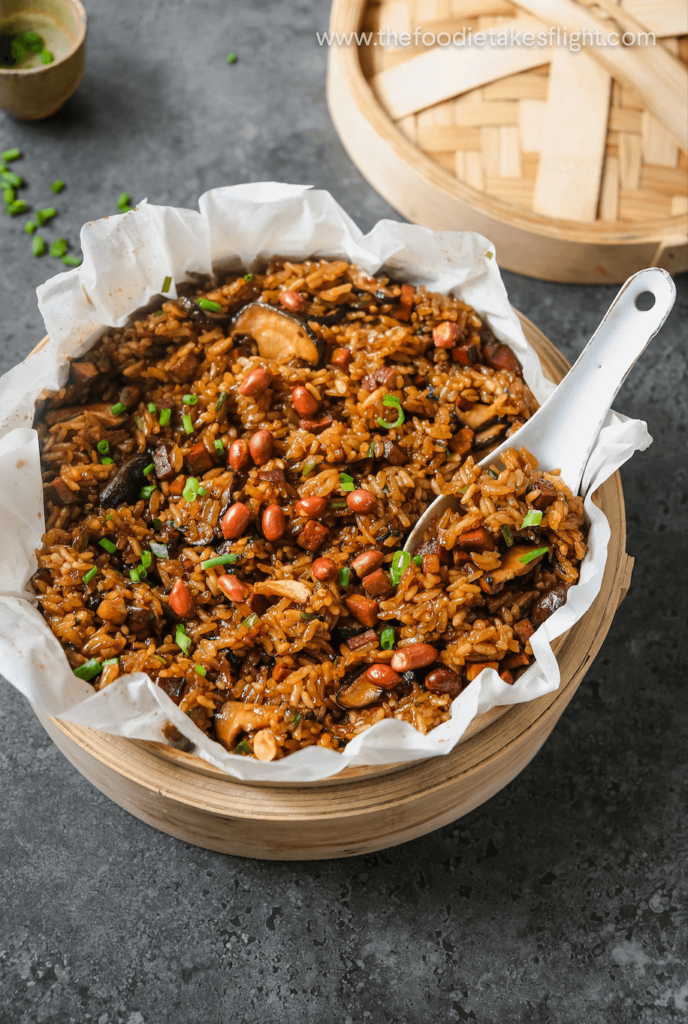
Growing up, sticky rice was a staple at home. I grew up with quite a few sticky rice dishes–from those wrapped in lotus leaves (lo mai gai), sticky rice dumplings (ma chang), and Hokkien salty rice (kiam peng).
This Chinese Savoury Sticky Rice is inspired by the kiam peng or kiampeng, which I grew up enjoying.
Kiam Peng is a Hokkien term that literally translates to ‘salty rice’ (kiam = salty, peng = rice) and despite it being called salty rice, I’d consider the flavour profile of this dish as savoury with a hint of sweetness and umami instead of just salty!
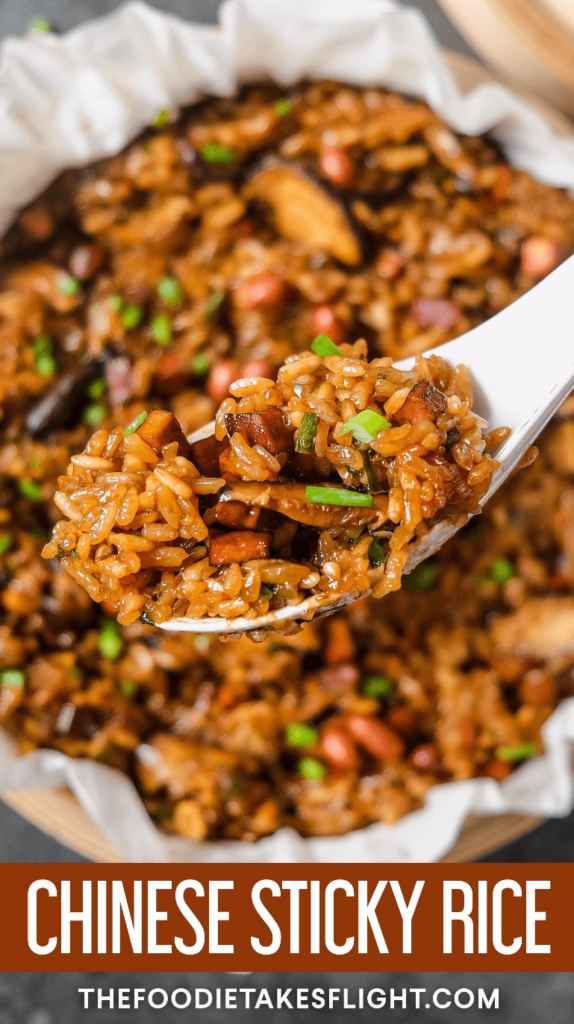
INSPIRED BY KIAM PENG
The kiam peng I grew up eating had a mix of carrots, greens such as bok choy, and pork but this version has mushrooms and tofu instead.
The kiam peng we’d make at home is usually cooked in a rice cooker or in a pot with all the sauce and the rest of the ingredients. I cooked this version by steaming the rice first and finishing it with the sauce and other ingredients on a stovetop.
Kiam peng can also be cooked with regular long grain rice or a mix of regular long grain and sticky rice.
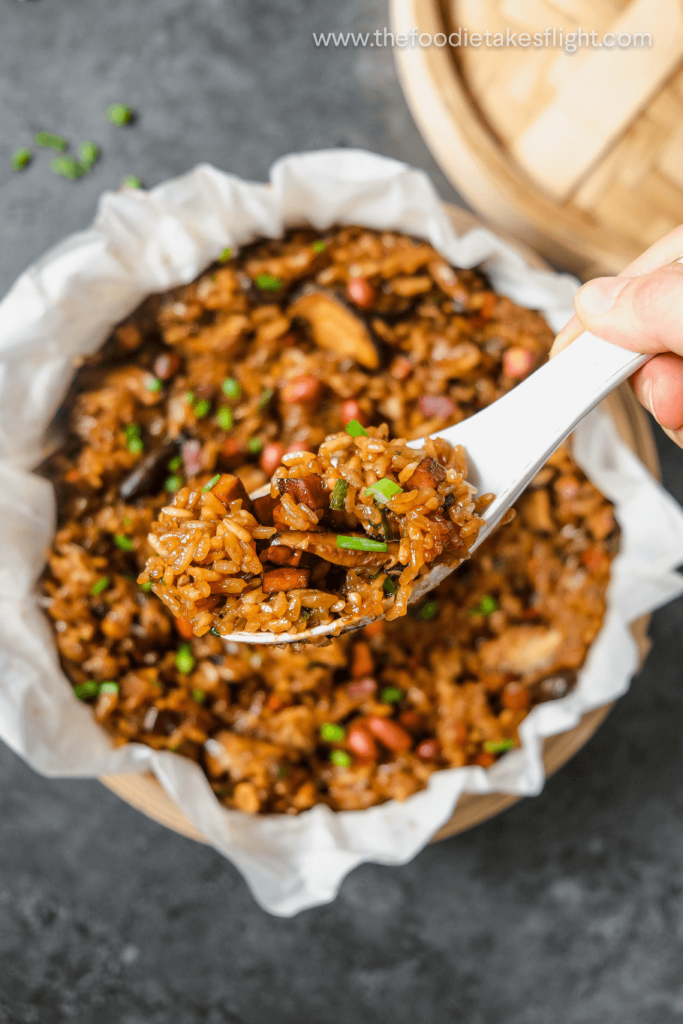
This savoury sticky rice is different from the kiam peng we’d usually cook since I use glutinous rice for this.
To achieve the stickiness and retain the chewiness of the grains, I steamed my grains instead of cooking them in a rice cooker, which involves cooking down the rice in its starches.
TOFU AND MUSHROOMS

Instead of the usual pork for this dish, I used a mix of tofu and mushrooms that I sautéed with some seasoning.
I sliced the tofu into small cubes but it’s really up to you how you want to cut them up. I did want to make them small so they can absorb the sauce better.

As for the mushrooms, I simply used fresh shiitake mushrooms and sliced them. You can also use other mushrooms of your choice!
I sautéed everything and set it aside to mix in with the rice later on.

VEGGIES
I used some mustard greens and simply sautéed it to serve with the rice afterwards. You can also use other greens of your choice such as bok choy, spinach, napa cabbage, etc.
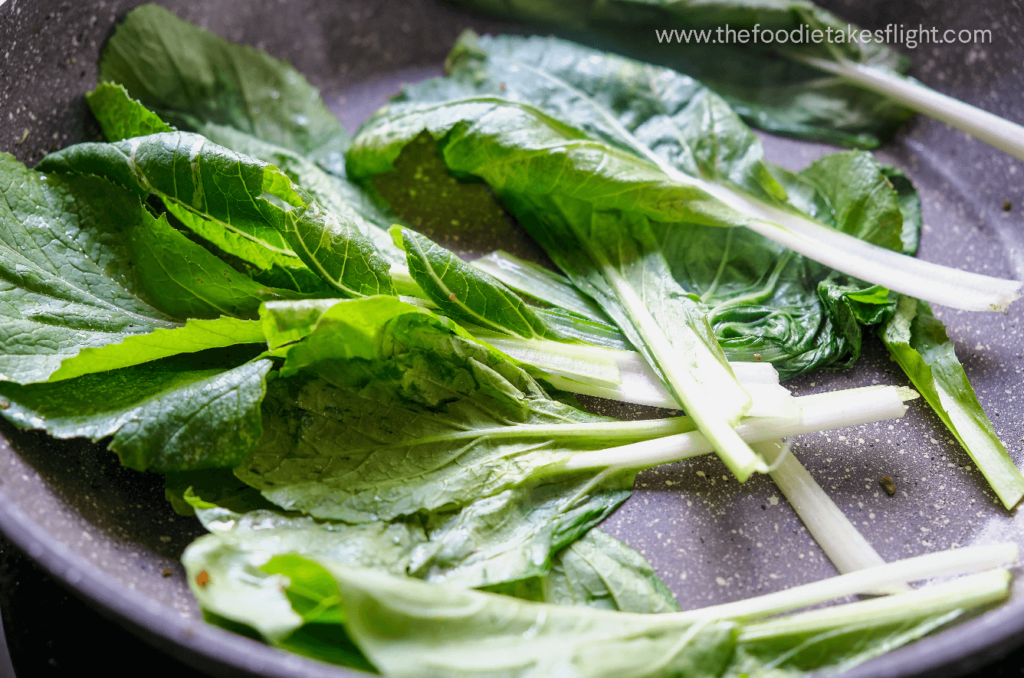
USING GLUTINOUS RICE
For this recipe, I used glutinous rice, which contains more starch that regular rice, so you’ll really get these beautiful shiny and chewy grains after cooking.
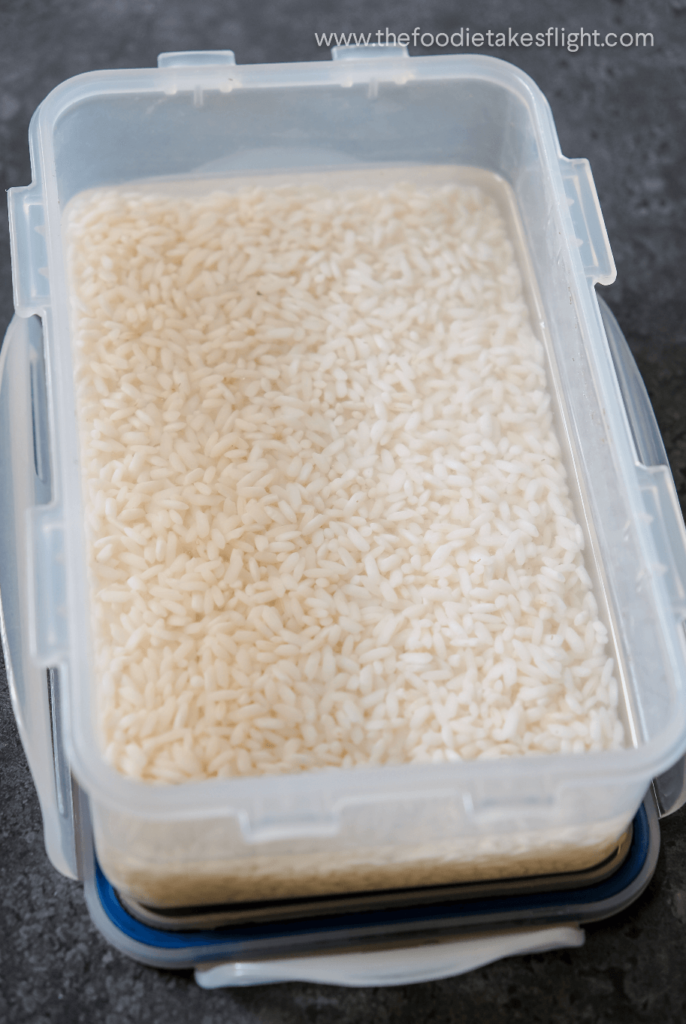
I soaked my glutinous rice in water for faster cooking. It’s best to soak it overnight but you can also do away with soaking it for 1-2 hours. Though note that it would take longer to cook via steaming since the rice hasn’t soaked for that long.
Steaming vs Boiling
In case you’re wondering if you can just cook your rice in a rice cooker or pot with a few cups of water.. Well, that’s usually the case for other types of rice such as regular long grain rice (such as the type I used for my claypot rice–see below) but for this recipe that uses 100% glutinous rice, I wouldn’t recommend boiling the glutinous rice.

This is because glutinous rice is very starchy so boiling it would yield to a very sticky, mushy rice since it’ll basically cook and soak in its starch.
In some cases it can even come out as a paste-like consistency if too much liquid is absorbed and the grains don’t hold up.
By steaming the glutinous rice, it cooks through the steam and doesn’t touch any of the liquid that sits at the bottom.
Steaming it gets really nice, chewy, and whole grains so you get that good bite when enjoying the finished dish.
2 OPTIONS FOR STEAMING THE STICKY RICE
Option 1: Bamboo steamer

You can opt to steam your rice by placing it in a lined bamboo steamer (I used parchment paper to line mine)
I find that bamboo steamers are the best especially since they help absorb the moisture so it doesn’t stick to the lid and soak whatever is being cooked at the base.
This is the best option for steaming food such as dumplings so the dumplings don’t get soggy from the excess liquid that isn’t able to escape the steamer. But for rice, in this case, I find that any of the two options work.

Look at the cooked glutinous rice grains!
Option 2: Regular Steamer
You can opt to use a regular steamer that you have. My rice cooker has a steaming option so I just placed it on the metal rack with the parchment paper as well.

COOKING AFTER STEAMING
After steaming the rice, I transferred it on the same pan used to pan-fry the tofu and mushrooms.
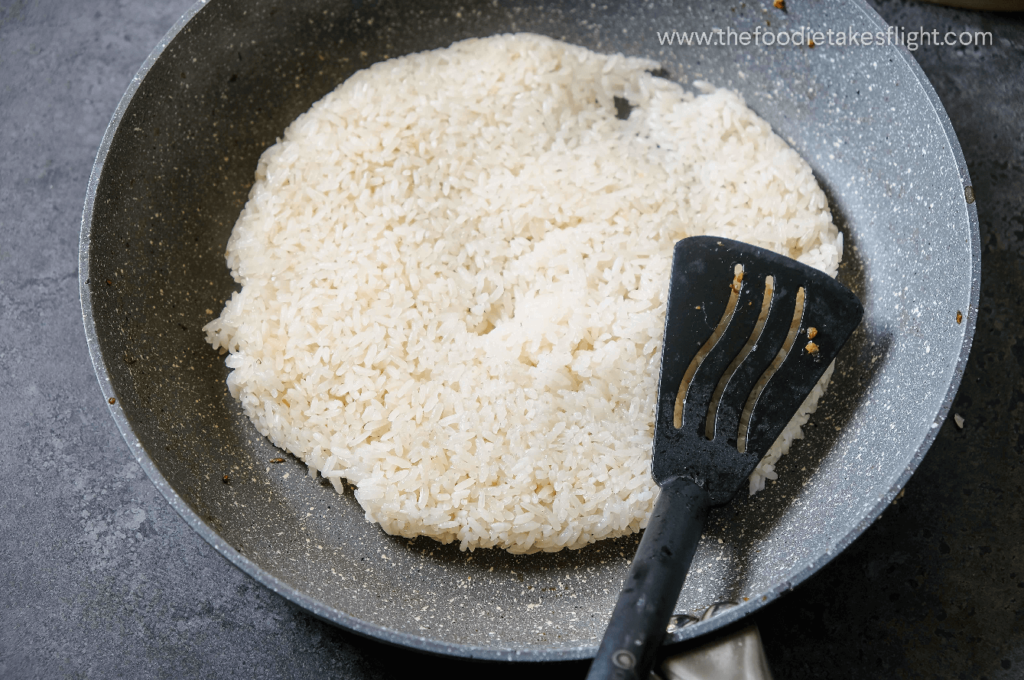
I added back in the tofu and mushrooms before pouring in the sauce.
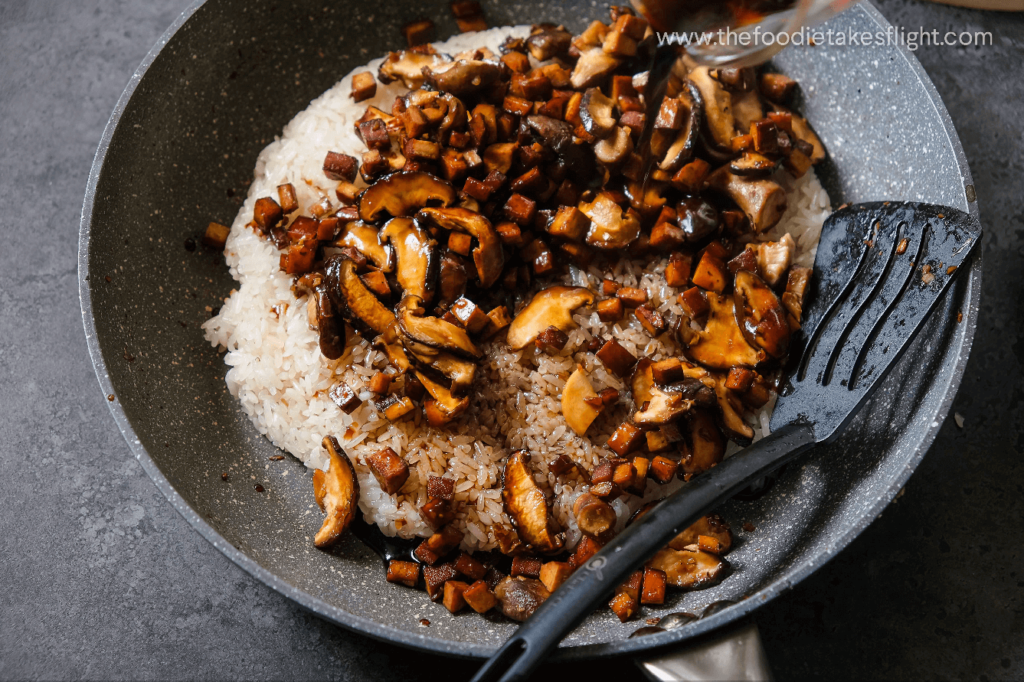
MIX IT ALL TOGETHER



Finish off the rice in the pan for a few minutes to cook the rice a little more so that it absorbs the flavours from the tofu, mushrooms, and that sauce!

Here’s the sticky rice I served in a bamboo steamer.
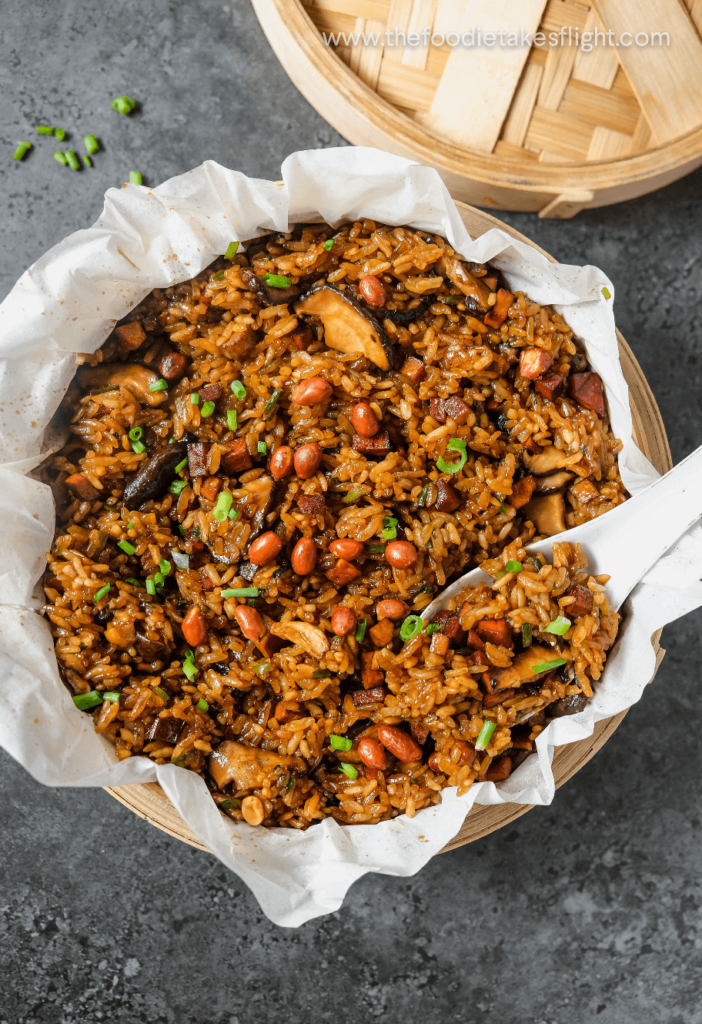
TO SERVE
I wanted to serve this as a dome so I scooped up the rice and placed it in a bowl.

I flipped the bowl over on a place and then here we have the rice!
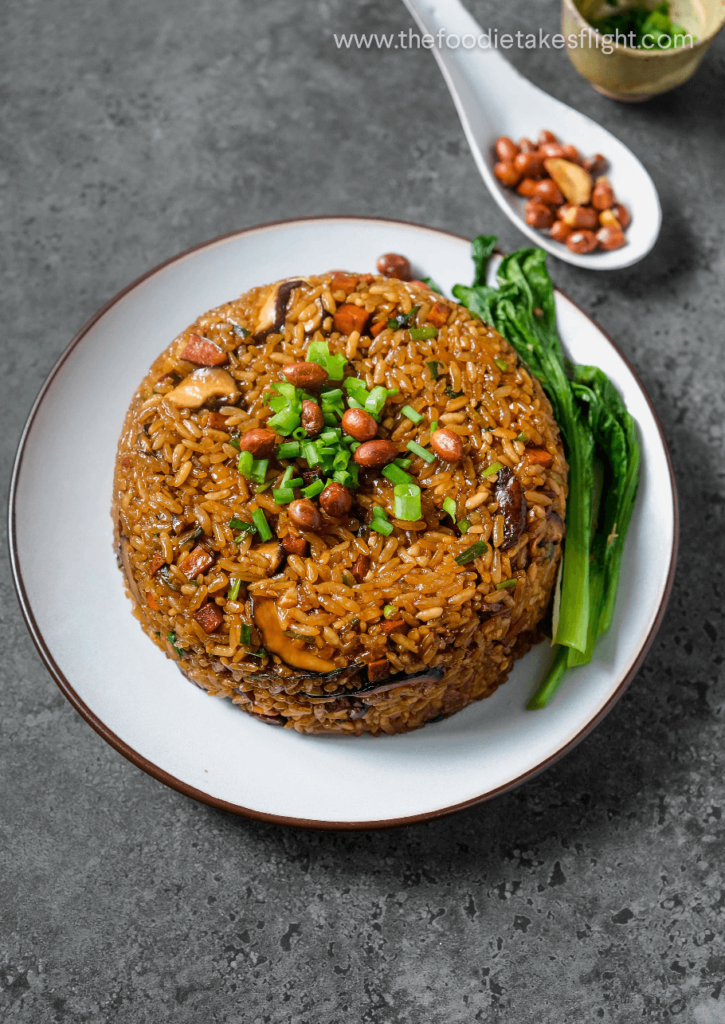
I served it with a side of the sautéed greens, some roasted peanuts, and more chopped scallions.
ENJOY YOUR STICKY RICE!
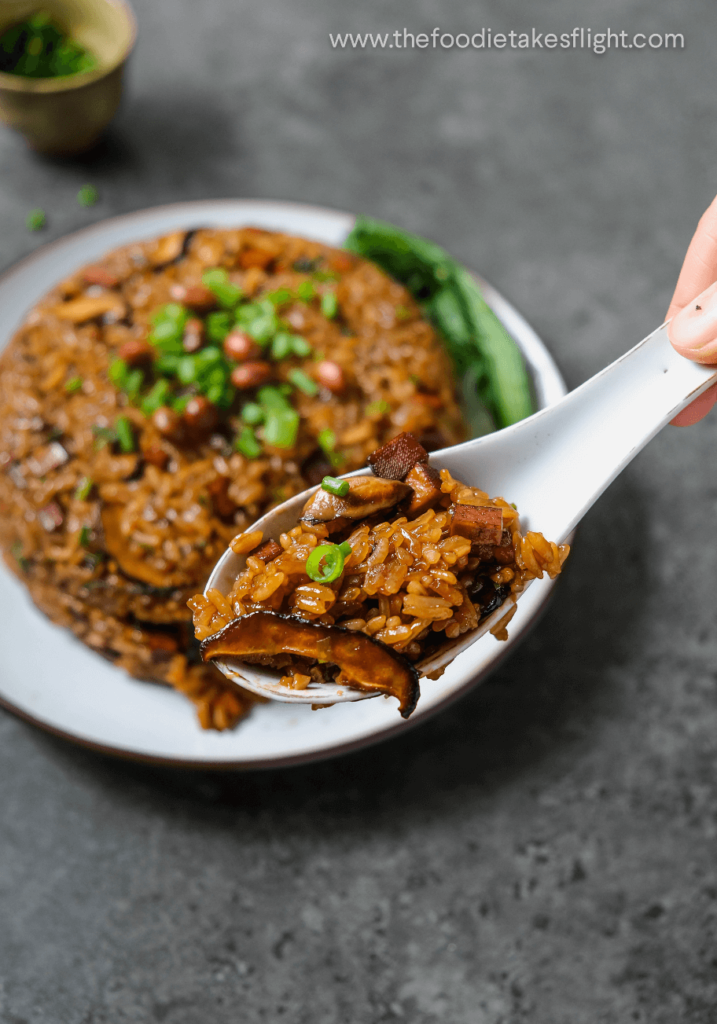
You’ll find the full recipe for this below!
Are you looking for more delicious, vegan recipes?
You can get a copy of my cookbook, Vegan Asian!
If you crave vegan-friendly versions of classic Asian dishes, this cookbook is packed with Southeast and East Asian dishes inspired by those I grew up enjoying at home and those I’ve tried from my travels. From iconic Thai dishes to piping-hot Japanese fare and everything in between, the recipes in this will take your palate on a delicious food trip across Asia, and hopefully keep you coming back for more!

You might enjoy these recipes:
- Japanese Chahan or Fried Rice
- Crispy Eggplant Katsu
- Scalloped Potatoes in Creamy Lemon Dill Sauce
- Chili Garlic and Black Bean Eggplant Noodles
- Easy Sweet, Spicy, and Saucy Noodles
- Stir-Fried Tofu and Basil Noodles
- Pan-Fried Tofu Cakes
- Tofu ‘McNuggets’
- Tantanmen (Vegan Ramen)
- Yaki Udon
- Chinese-Style Bolognese
Chinese Savoury Sticky Rice
Equipment
- Bamboo steamer or regular steamer
- Parchment paper to line your steamer
Ingredients
Rice
- 1 cup dry glutinous rice or short grain, see notes (205 g)
Sauce
- 1/2 tbsp dark soy sauce
- 1 tbsp soy sauce
- 1 tbsp cane sugar
- 1 tsp sesame oil
- Pinch ground white pepper
- 1/4 cup vegetable broth or water
Fillings
- 1 tbsp sesame oil
- 1 tsp minced garlic
- 1 tsp minced ginger
- 3.5 oz fresh shiitake mushrooms or other mushrooms of choice sliced
- 3.5 oz extra firm tofu pressed and diced (see notes)
- 1 head bok choy mustard greens, or other greens of choice (optional)
- 1/2 tbsp Shaoxing wine or dry sherry, optional
- 1 tsp dark soy sauce
- 1 tbsp soy sauce
- 2 tsp cane sugar
To Cook
- 1/2 cup vegetable broth or water, adjust accordingly
- 15 g chopped chives or scallions , around 1/4 cup
To Finish
- Roasted peanuts
- Chopped scallions
Instructions
Rice
- Soak the rice for at least 1 hour. I soaked mine overnight to speed up the steaming process.After soaking, rinse the rice through running water and then drain the liquid.If using shot grain rice, see notes below.
- Place the rice in a steamer OR bamboo steamer lined with some parchment paper (to prevent from sticking). Spread the rice and then cover.
- Steam for 25 to 40 minutes or until chewy and almost cooked through.Note: The steaming time can be anywhere between 25 to 40 minutes depending on how long you soak your rice.
- If using a bamboo steamer, simply heat some water on your pan or wok. Make sure not to add too much water that it can reach the base of your bamboo steamer and soak the paper/rice! Leave the water to boil. Once the water boils, place the bamboo steamer on the pot.
- The cooked rice will turn translucent. You can simply try it to see if its chewy.
Sauce
- Mix all the ingredients together. Adjust according to your desired taste. Set aside. Note that you can always add more soy sauce later on as needed.
Fillings
- Prepare the tofu, mushrooms, and greens of choice (I used mustard greens) along with the chives, garlic, and ginger.
- Heat a large pan or wok over high heat.
- Add in the sesame oil.
- Once hot, sauté the garlic and ginger until aromatic, around 2 minutes.
- Add in the tofu and then pan-fry until lightly browned on all sides. Add in the wine and soy sauces. Sauté for 2 to 3 minutes.
- Sprinkle the sugar and then mix well to coat the tofu. Lower the heat to medium and leave the sugar to dissolve.
- Add in the sliced mushrooms and then mix well with the tofu.
- Cook the mushrooms for 2 to 3 minutes. Remove the tofu and mushrooms from the pan and then set aside.
- Sauté the vegetables, if using, in the same pan with some oil until cooked through.
- Set aside the vegetables as well.
To Cook
- In the same pan or wok, add in the steamed glutinous rice.
- Over medium low heat, add in the tofu and mushrooms.
- Pour in the sauce.
- Leave the rice to simmer over medium low heat and then mix it well to coat the rice with the sauce. Add 1/4 to 1/2 cup water, as needed, to completely cook down the rice. You may need more or less depending on how chewy your rice is.
- Mix in the chopped chives.
- Cover the pan and leave the rice cook for 2 to 3 more minutes over low heat until the rice has absorbed the excess liquid and is completely cooked through.
- Afterwards, you can place the rice back into your bamboo steamer (if you used one) and serve. I placed mine back so I can easily cover it to prevent it from cooling too fast. You can also just place yours in a container with a lid to prevent from cooling too fast.
- OR you can also scoop the rice and place it in a bowl.
- Turn the bowl over on a plate to create a dome shape.
- Top your rice with chopped scallions and roasted peanuts. Enjoy!
WATCH Video
Notes
Short-Grain Rice:
- Short grain rice such as Japanese rice cooks faster than glutinous rice especially if it’s soaked overnight so I’d recommend steaming for 15 to 20 minutes first and seeing from there how cooked it is.
Can I cook my rice in a rice cooker instead of steaming?
- I personally wouldn’t recommend this because the rice can turn mushy if soaked in the liquid and starch as it cooks. A rice cooker can be your last resort, but if using one I would recommend to lessen the water so the grains don’t overcook.
Tofu
- I used five-spice tofu, which is very firm and similar to smoked tofu. If you have access to them, either options will be great! If not, you can always use plain extra-firm tofu and press it well to make sure to drain the excess liquid.
NUTRITIONAL INFO
You can pin these Images:

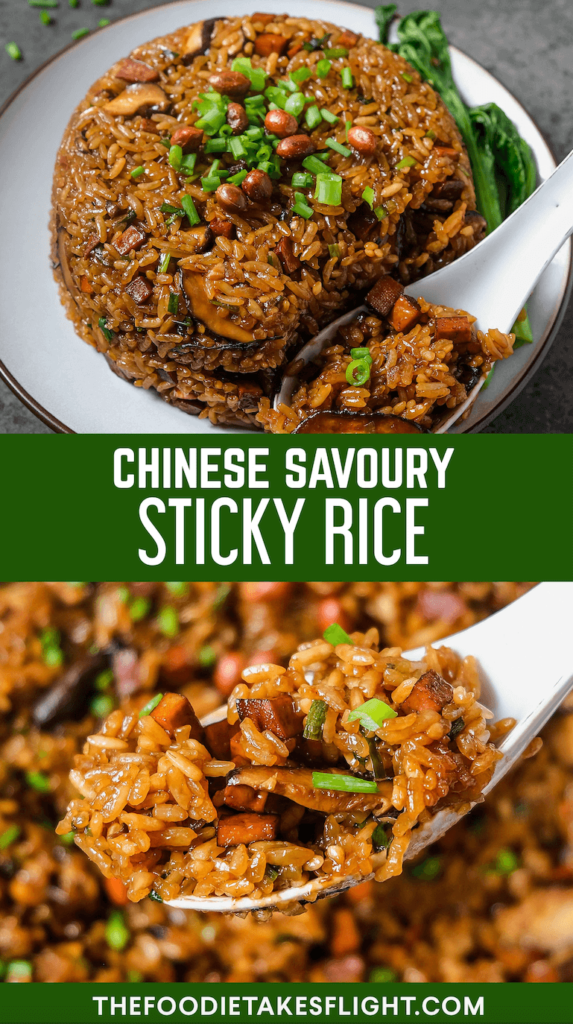




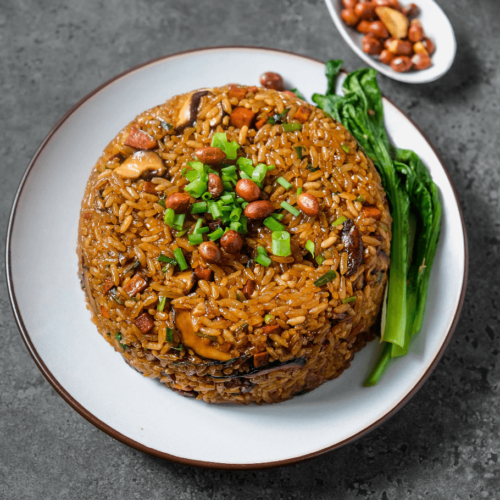
























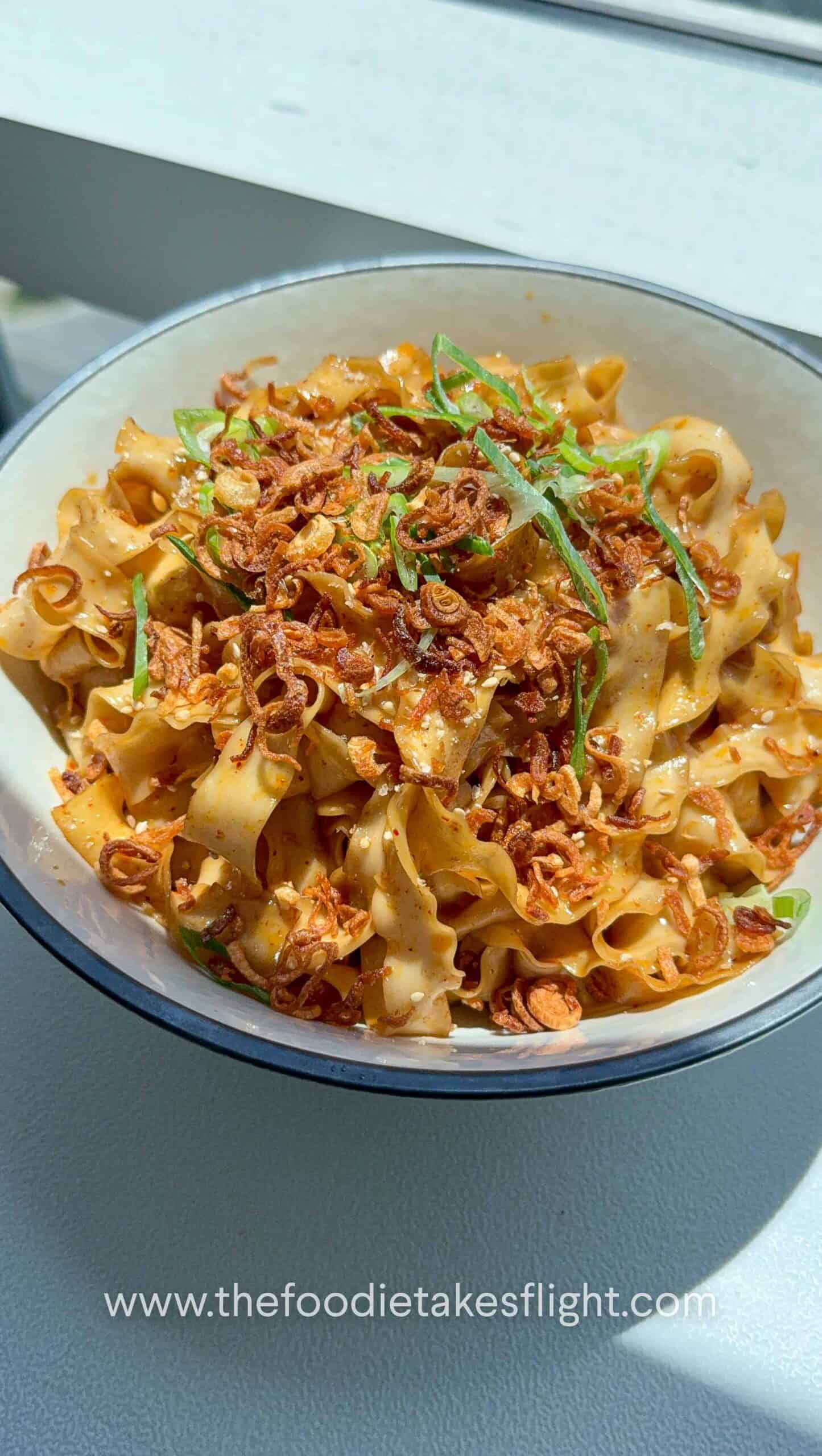
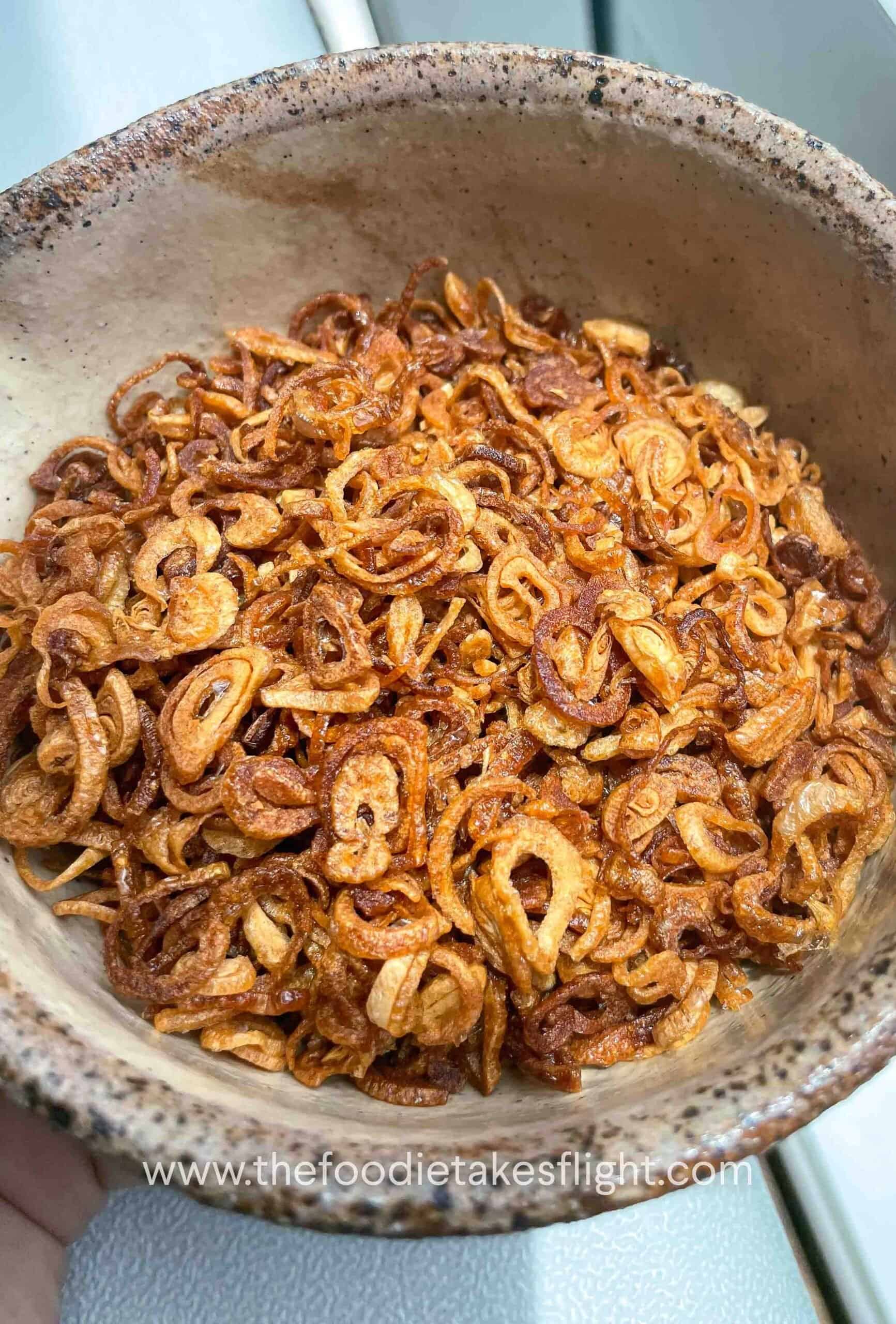
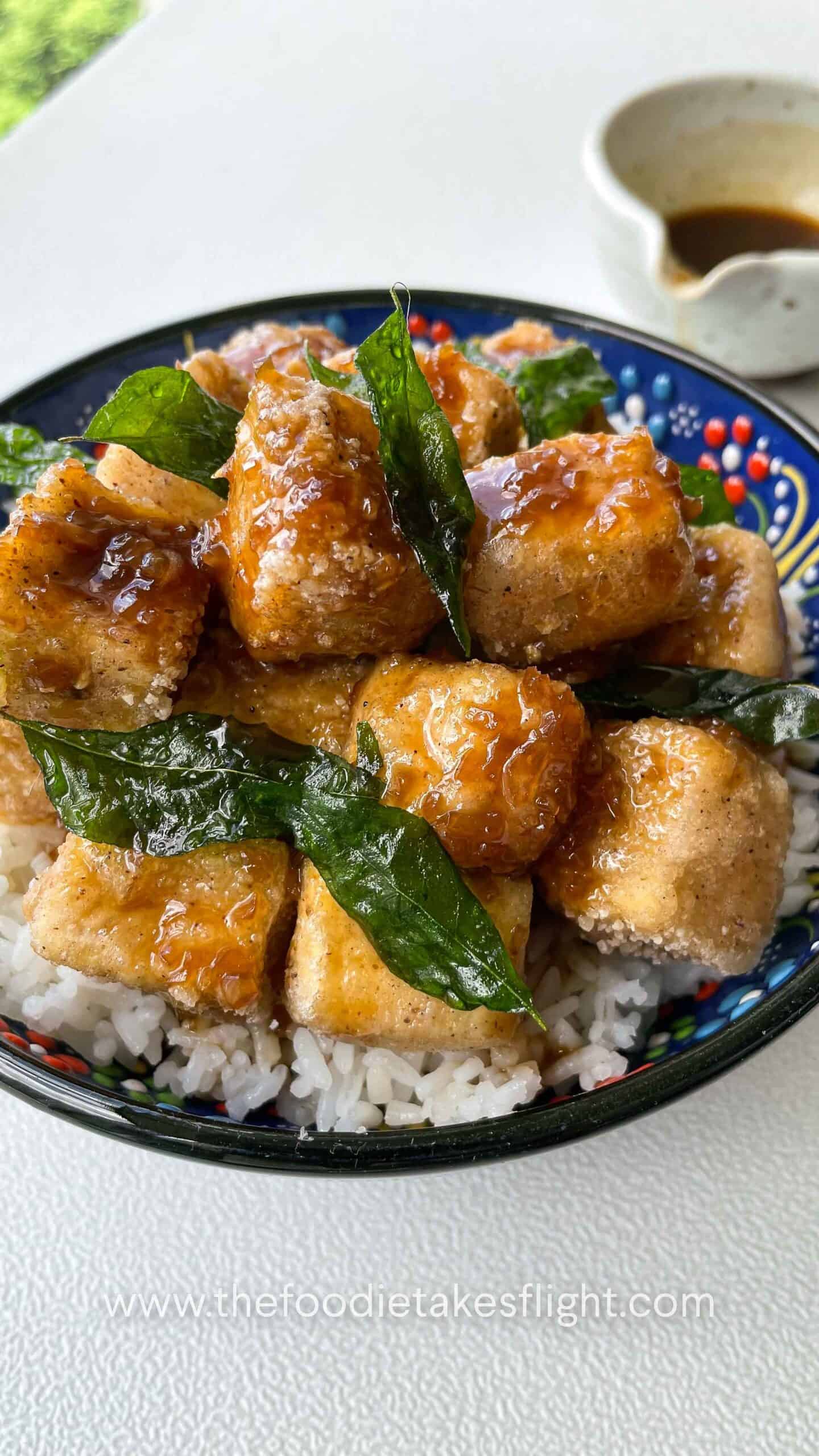
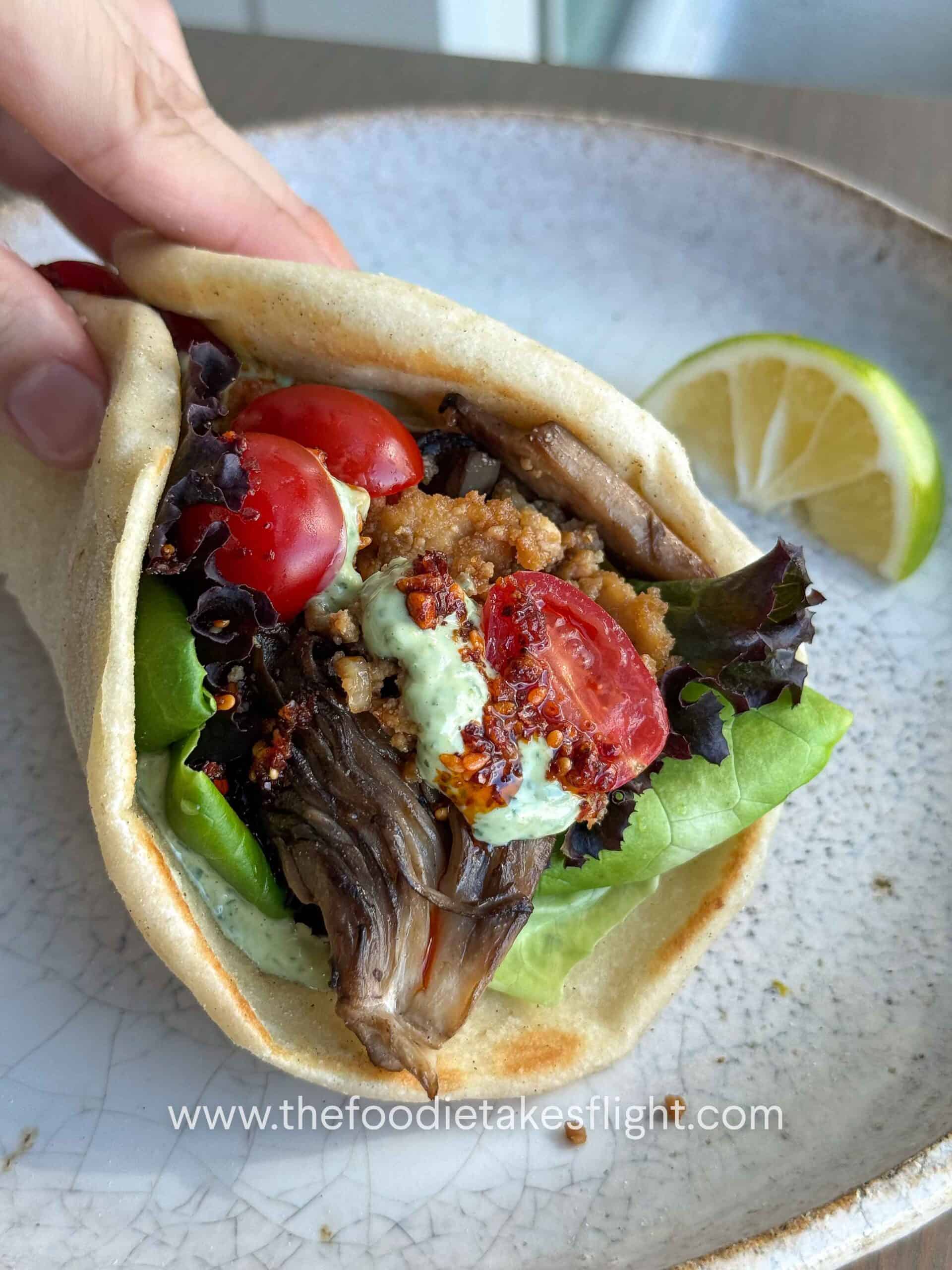
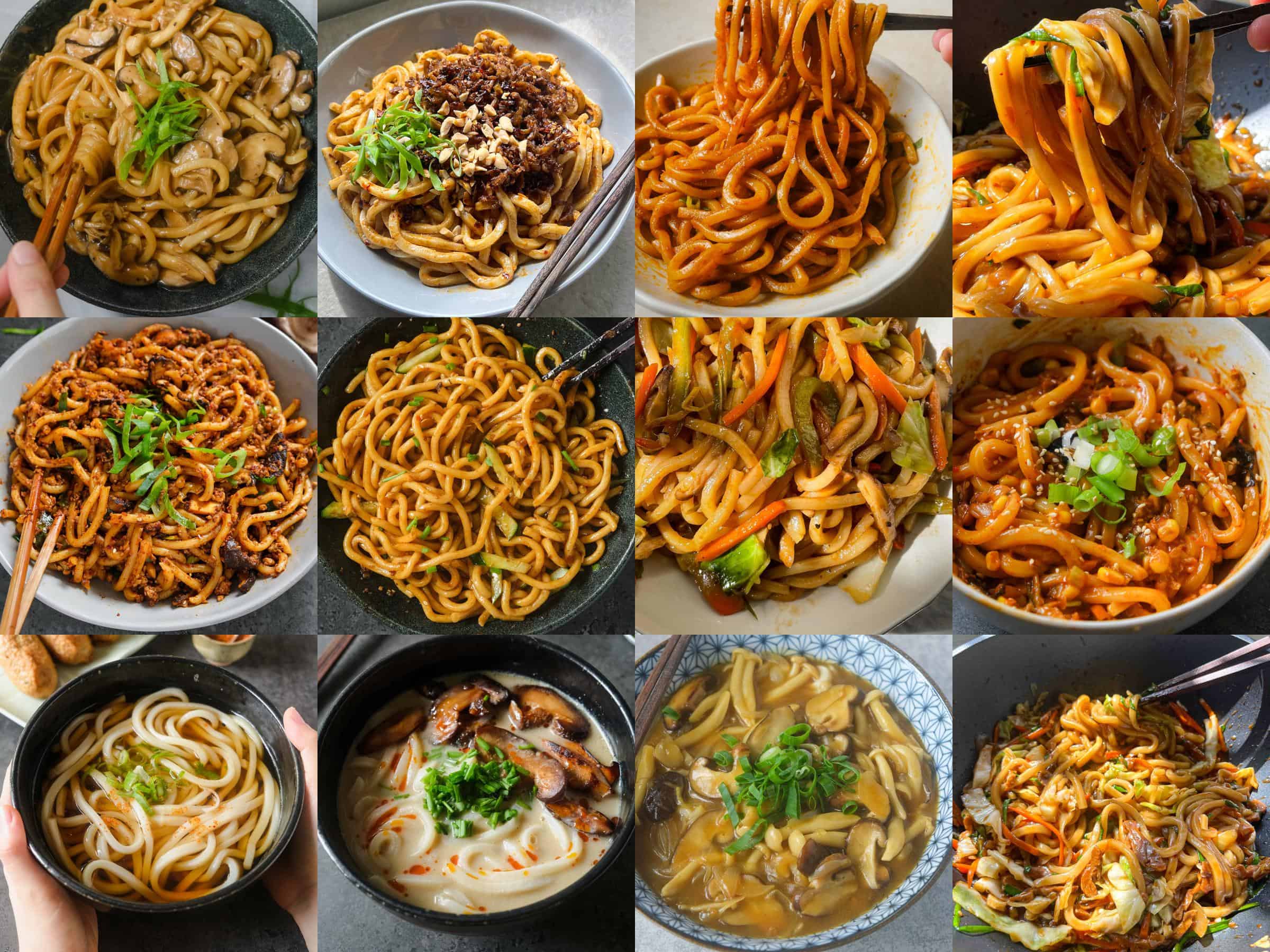
This Post Has 22 Comments
I can’t wait to make this! Will it reheat well? I want to make a full batch then eat it for dinner over multiple days… but not sure if this type of rice can be reheated, or it’ll turn too sticky? Would appreciate your opinion!!
Hi Dee! It actually won’t turn too sticky if stored and reheated. I tried it once before when I had leftovers and I just microwaves the leftovers or you can also steam them. But I wouldn’t recommend adding anymore water since the water can turn the rice into mush if the too much is added haha. Hope this helps!
Can the rice be made in a rice cooker?
Hi Anna! I haven’t tried this in a rice cooker since I prefer to steam the glutinous rice to keep the grains whole and chewy. Based on experience you can cook glutinous rice in a rice cooker but it can easily clump together if it sits in the liquid and cooks in it. A good ratio would be 1 portion rice to 2 portions of liquid. Please let me know if you try this out. Thank you!
Hi Thank you for sharing the recipe. I try to make it today and it was delicious ?
I use bamboo steamer to cook the rice & use dried shiitake mushrooms ( soak them first with hot water ) & use the water at the end of cooking .thank you
Thanks Joanne! 🙂
I would love to make this, but I don’t have a steamer or rice cooker. Will this turn out in pot?
Hi Victoria! I reco to set up a steamer on your pot if you can. If not, cooking the rice in a pot can work but it can turn out a bit mushy the grains won’t be as defined and chewy as compared to steaming. I recommend a 1:1 rice to water ratio and to soak your rice for at least 1 hour. Then leave it to cook over medium low for 15-20 minutes or until the rice is cooked. Then you can leave the pot covered even with the heat turned off since the rice will continue to cook in the residual heat. Hope this helps!
I made it, it was perfect. I soaked the rice overnight, rinsed it and steamed it for about 40 minutes. Thanks for the recipe, I will make it again with different ingredients to mix it up.
Glad you liked it! Thanks so much for leaving a review! ◡̈
Would love to make this recipe, could I substitute the rice for sushi rice?
Yes that would work too, but it of course won’t be as sticky. Let me know if you try it out! ◡̈
Will black sticky rice work as well?
Hi Amy! I haven’t tried it myself but should be okay to use too. It’ll cook a lot longer though so you can soak the rice then steam the rice for longer until it’s chewy. ◡̈ texture will be a bit different compared to white sticky rice of course. Hope this helps!
Hi Jeeca,
I love this recipe. I will make it this Christmas break 😊
Can I use a stainless steel steamer instead of bamboo?
Hi Liela! Yes you can use a stainless steamer too. I recommend to wrap the lid with a towel so it absorbs some of the water that evaporates during steaming ◡̈ hope this helps
Help! All of your recipes so far have worked so well for me, but I tried to make this today and had a disaster 🙁 I soaked the rice for eight hours, then put it into my bamboo steamer with parchment paper – two hours of steaming later, the very bottom layer of the rice was translucent, but all of the rest of it was still uncooked – any ideas? It looks so delicious, I really want to try again!
Hi RJ! I havent encountered a problem like this, hmm. Did you spread out the rice evenly on your parchment paper? And did your pot/pan have enough water to generate enough steam throughout? Another step that might help is if you mix around the rice every 15 minutes or so while steaming to hopefully get all of the rice cooked. Please let me know if you try it out again, hopefully it works out!
Thank you so much for replying! I did the first two things, but I didn’t try flipping it around, so I will definitely try that next time, thank you! In the end, I still went ahead and made the dish and just let the rice cook down for longer in the pan with the sauce, it still turned out absolutely delicious!!
No problem, RJ! Glad it still worked out! ◡̈
i made a double batch of this last night using 2 cups of short grain rice i cooked in my rice cooker with 2 cups of water. i didn’t soak the rice, didn’t use ginger (didn’t feel like grating it lol…) and didn’t have chives, but it came out great! i think the only thing i would change is just a bit less sugar overall as it came out a little sweet for my taste but very tasty regardless.
Hey Sunny, thanks for giving this a try! Glad you liked it even if it turned out a bit too sweet to you liking 🙂